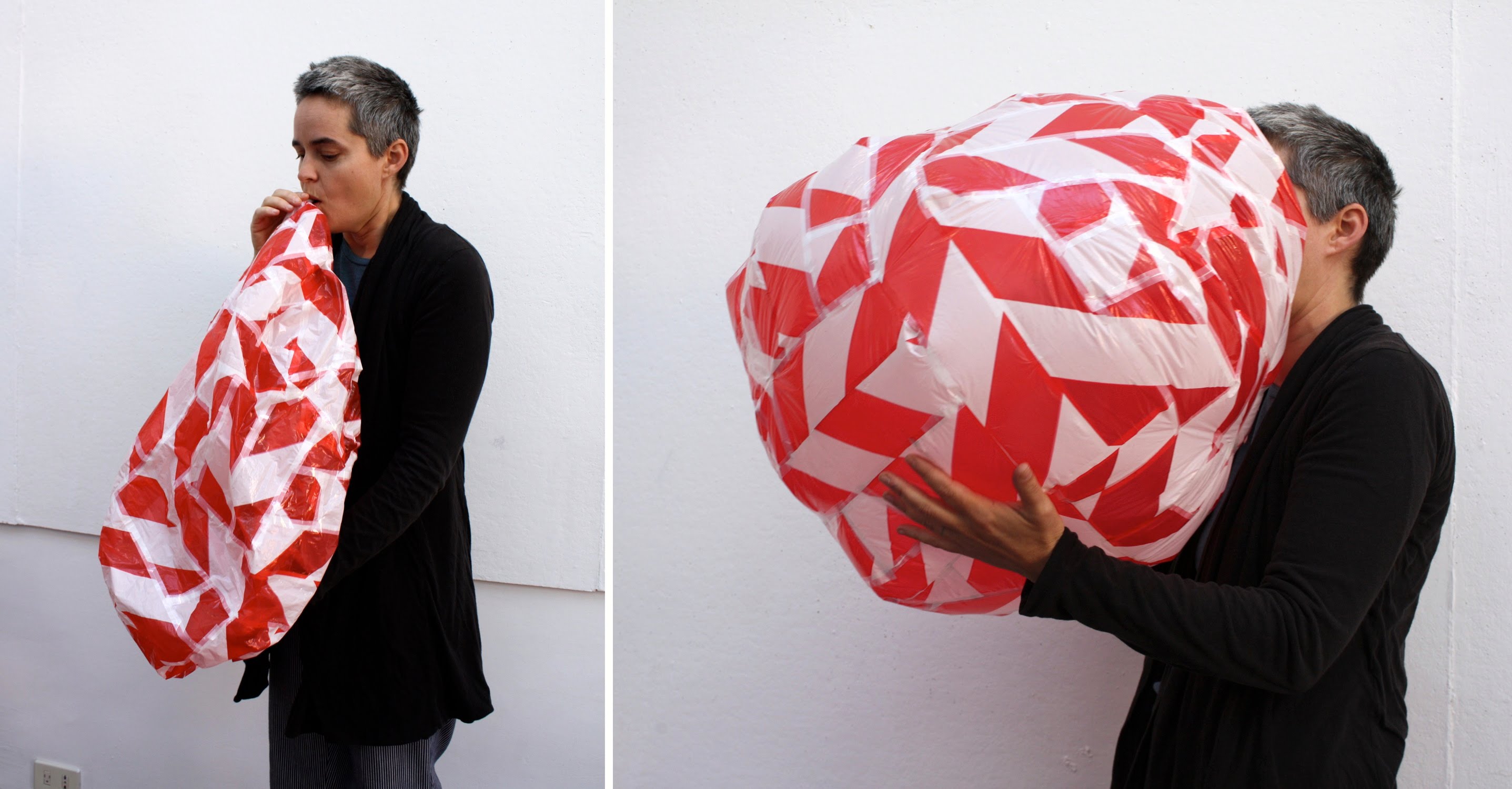
Due: Wed., Jan. 25
Create three improvised, unusually shaped inflatables, each at least the size of your head. You are supplied with colorful plastic and tape for this project. You are also welcome to use your own plastic and tape. You are also supplied with straws in order to blow up the completed forms.
Allow the inflatables to be quirky, unusual, even strange. Experiment with the materials without knowing what the shape will become. Cut random shapes out of the plastic and then tape them together in a new order to see what happens. Cut the plastic into strips and curves, and then reassemble them in a new order to find a new shape. What forms are created when you put a round shape and a straight shape together? What character or characteristics does the form begin to take on? Is there a verb for what the shape is doing? As you are making these intuitive shapes look for what amuses you or seems quirky, weird or unexpected.
At the core of this assignment is creating a form that is unusual and unexpected. Aim to surprise us next week in class with your shapes and discoveries.
Come prepared to share your inflatables with the class.
Documentation
- Documentation is due within one week after the assignment due date above.
- Upload your documentation to the class website, with the category of Improvisation Inflatables. Here are instructions on How to Post to the Class Website.
- Your documentation should include:
- a paragraph outlining your explorations: your process, discoveries, successes, challenges.
- photographs or short videos of your objects (Please embed the video so it can be directly viewed; you may either upload an MP4 file to our server or use supported third-party hosting, such as Vimeo or Youtube, etc.)
- Examples of documentation posts: 1 , 2 , 3 , 4 , 5
Assessment
Points for this project will be divided amongst the following criteria:
EXPERIMENTATION/ RISK-TAKING/ INVENTIVENESS: The maker’s willingness to take risks (in composition, formal choices, materials, ideas, and content) is evident. Also important is the maker’s openness to new ideas, chance occurrences, and feedback throughout the creative process.
EXECUTION: Decisions about materials used and the manner in which the work is constructed, fabricated, and composed are deliberate. The maker’s choices indicate an awareness of how formal issues, materials and processes contribute to the interpretation or experience of the work.
DOCUMENTATION: Documentation well represents the works. It is clear, focused, and without extra elements that distract from experiencing the work. It includes both written reflection and photographic or video elements. Photographs are large enough for us to easily view the works.
